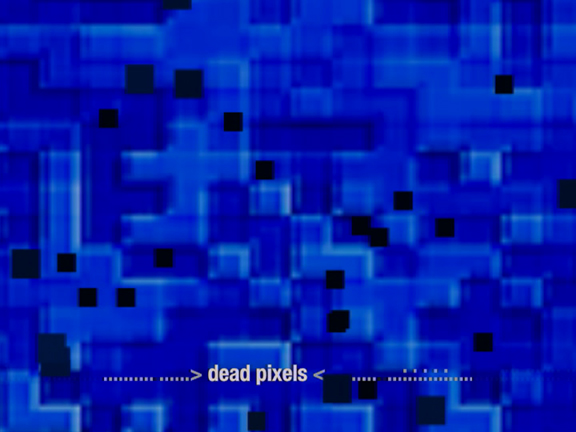Globe , 2003
Video loop, 3 minutes
Courtesy of the artist

Divided in two, each side of the screen features a globe turning quickly and slowing to a halt. Each time it stops, a random encounter is created between two geographical areas. Tension is thus generated between the representation of reality in each of the two screen parts and the new place created by the juxtaposition of the two, attesting to the potential of border changes, migration of nations, the movement of continents, etc. The work touches upon questions of immigration, occupation, colonialism, globalization, terrorism, arbitrariness, and play (it contains an element of a casino game). The straight dividing line created by the split screen alludes, at times parallels, to straight borders marked in the course of history throughout the world (such as borders between states in the United States and between countries in Africa). The work elicits questions concerning knowledge and orientation (or the lack thereof), confronting us with the realization that between every two spots in the world there is always some kind of connection (whether economic, political, geographical, historical or cultural). If we do not know what that link is, it is only because we, as viewers, lack knowledge about it. Much attention was devoted to the formal and color accord of the geographical combinations, but the idea of the ”unexpected” encounter is nevertheless convincing.
- Lior Neiger
Click here to watch the video.
|
Dead Pixel , 2005
Video Projection loop, 4 minutes
Courtesy of the artist

Dead Pixel points to the way we are engaged with reality, virtually rather than physically. The virtual realm is where we discover the outside world and accumulate knowledge (via computer, Internet etc.); at the same time it is a place for forgetfulness, the place where we loose touch with reality. The dead pixel, a black pixel with no color information that appears on LCD screens is a metaphor for death in the real world. Through the death of pixels in the work, the apparatus reminds us of the existence of the physical realm and thus acts as a technological memento mori.
Several different sources contribute to the running text: The storyline is composed in a structure similar to that of problems/questions found in threads over the Internet. The faded text is a combination of html syntax from both Internet sites and emails suspected to be infected with a virus, fragments from Michel Foucault’s Discipline and Punish (particularly from Panopticism) and data and characters gathered from other sources.
The numbers shown on the monitor while the globe spins which seem to represent numbers of dead pixels, are actually the numbers of people who died of AIDS in 2004. Other numbers referred to in the work, are the number of American soldiers and Iraqis killed in Iraq and the number of Palestinians and Israelis killed in the recent conflict. The video will be updated periodically with the most recent numbers.
- Lior Neiger
Click here to watch the video. |